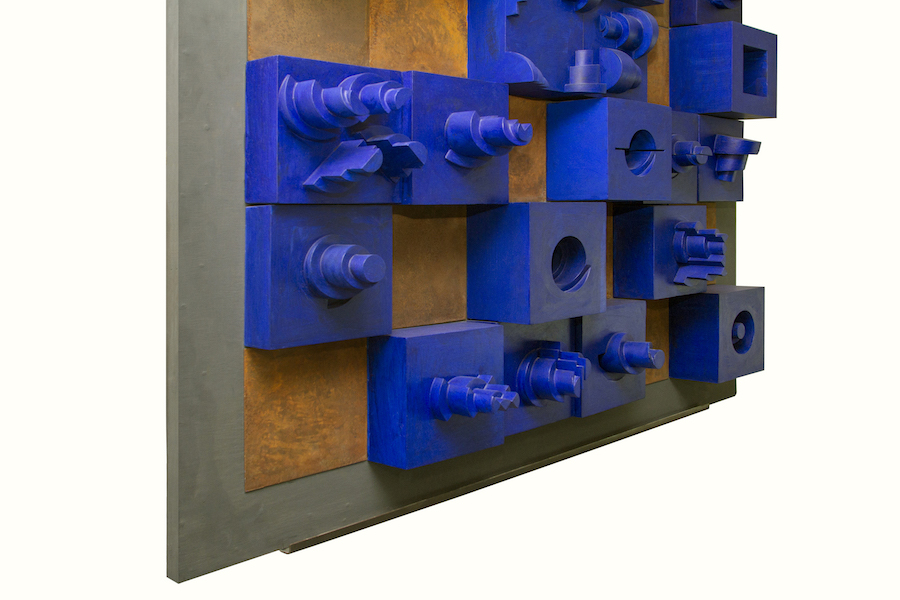The great minaret of Sāmarrāʾ



As a sculpture student in the USA, Samer studied the spiral minaret of the Great Mosque of Samarra, a form he was so besotted by. Years later with the help of Iraqi artist Mohammad Hussein Abdullah, he created miniature replicas of the minaret.
These replicas along with their molds were then used as tools for experimentation. Samer toyed with the idea of positive & negative spaces, how could one form develop into so many different outcomes?
He reflects on how he oscillated between being an artist and a craftsman, and how the support of Mohammad Hussein Abdullah created one of his most iconic and complex wall sculptures.

“The Sāmarrāʾ dizzied me, and so, I unravelled her” -Samer Tabbaa
Through this process, Samer explored the diverse forms achievable through a single mold, resulting in the making of 19 unique renditions of the minaret model. Cast in gypsum and painted Prussian blue, the pieces sit on a carpet sheet of brass, unravelling Tabbaa’s rendition of the 19th century Abbasid ruin.

The Sāmarrāʾ artwork was later exhibited in 1997 at the “Voyage en Jordanie” exhibition which took place at Hôtel de Ville in Paris. Tabba’s work was displayed alongside works by fellow artists Ali Jabiri, Ghada Dahdaleh, Rula Shukairy, Dodi Karim, Nawal Abdullah, Mona Saudi and Fahrelnissa Zeid. The collective exhibition was opened under the patronage of Her Royal Highness Queen Noor Al Hussein.









